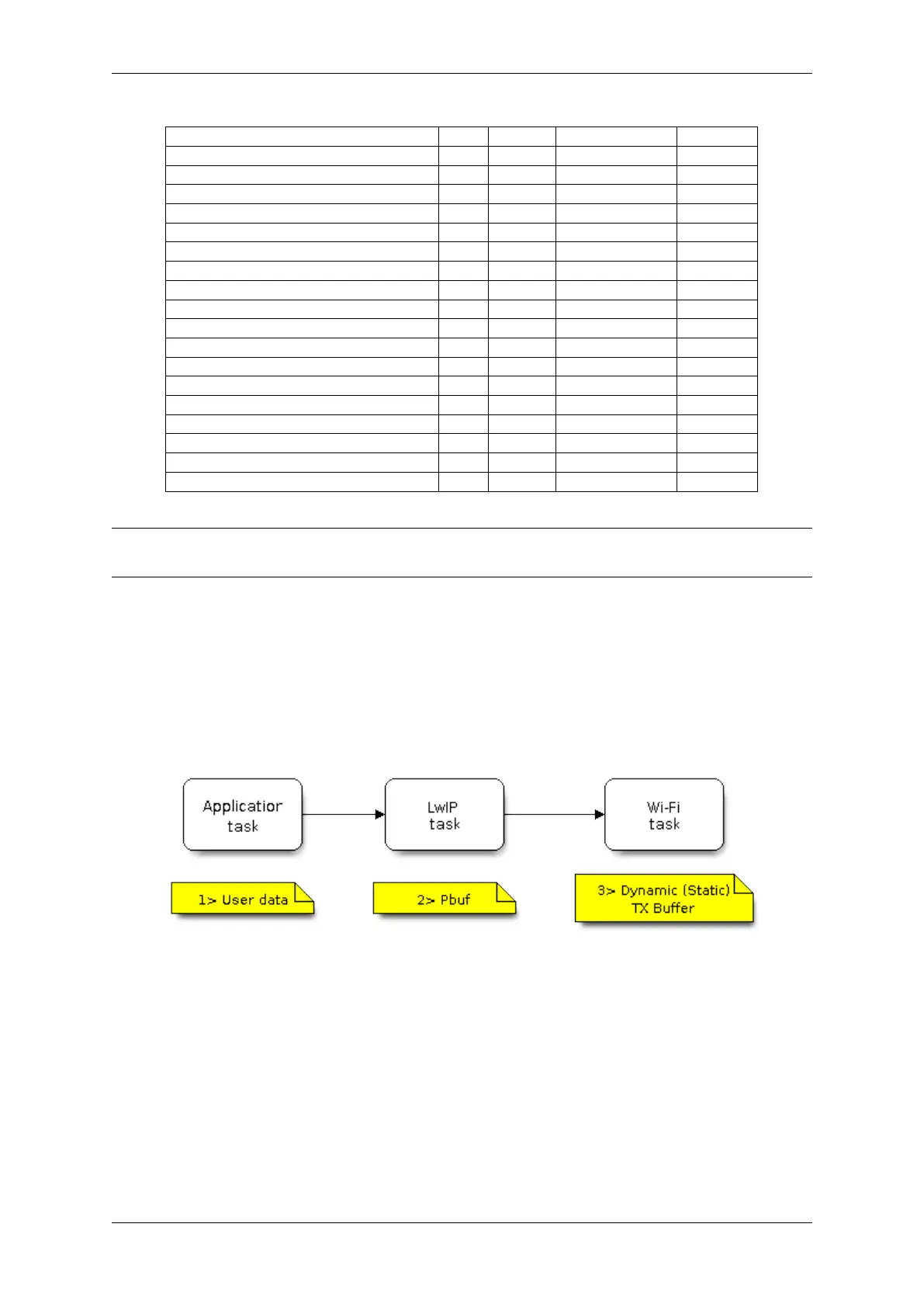Chapter 4. API Guides
Rank Iperf Default Memory saving Minimum
Available memory (KB) 70.6 96.4 118.8 148.2
WIFI_STATIC_RX_BUFFER_NUM 8 8 6 4
WIFI_DYNAMIC_RX_BUFFER_NUM 64 64 64 64
WIFI_STATIC_TX_BUFFER_NUM 16 8 6 4
WIFI_RX_BA_WIN 16 6 6 Disable
TCP_SND_BUF_DEFAULT (KB) 32 32 32 32
TCP_WND_DEFAULT (KB) 32 32 32 32
WIFI_IRAM_OPT 15 15 15 0
WIFI_RX_IRAM_OPT 16 16 0 0
LWIP_IRAM_OPTIMIZATION 13 0 0 0
INSTRUCTION_CACHE 16 16 16 8
INSTRUCTION_CACHE_LINE 16 16 16 16
DATA_CACHE 8 8 8 8
DATA_CACHE_LINE 32 32 32 32
TCP TX throughput (Mbit/s) 40.1 29.2 20.1 8.9
TCP RX throughput (Mbit/s) 21.9 16.8 14.8 9.6
UDP TX throughput (Mbit/s) 50.1 25.7 22.4 10.2
UDP RX throughput (Mbit/s) 45.3 43.1 28.5 15.1
Note: Reaching peak performance may cause task watchdog. It is a normal phenomenon considering the CPU may
have no time for lower priority tasks.
4.33.33 Wi-Fi Menuconfig
Wi-Fi Buffer Configure
If you are going to modify the default number or type of buffer, it would be helpful to also have an overview of how
the buffer is allocated/freed in the data path. The following diagram shows this process in the TX direction:
Fig. 47: TX Buffer Allocation
Description:
• The application allocates the data which needs to be sent out.
• The application calls TCPIP-/Socket-related APIs to send the user data. These APIs will allocate a PBUF used
in LwIP, and make a copy of the user data.
• When LwIP calls a Wi-Fi API to send the PBUF, the Wi-Fi API will allocate a “Dynamic Tx Buffer”or
“Static Tx Buffer”, make a copy of the LwIP PBUF, and finally send the data.
The following diagram shows how buffer is allocated/freed in the RX direction:
Description:
Espressif Systems 1551
Submit Document Feedback
Release v4.4

